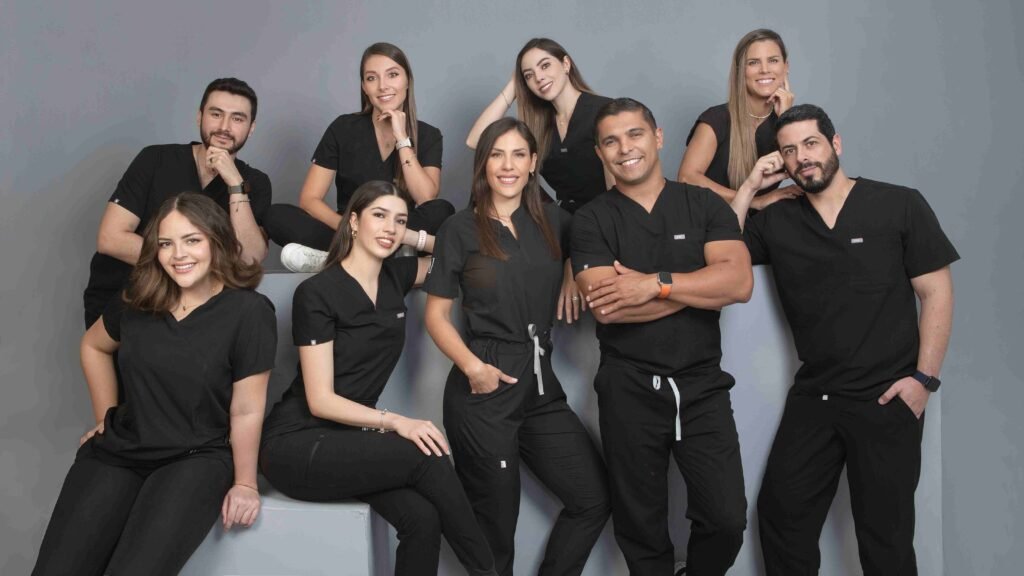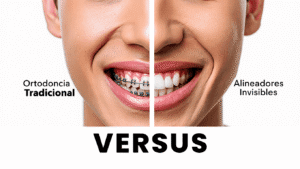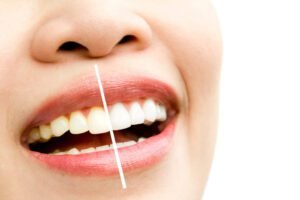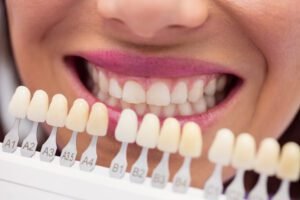“Many patients nowadays are highly anxious or suffer from panic attacks; they’re terrified of the dentist or even just needles.” – Dr. Alejandra Mora
1. Why We Feel Anxiety or Fear at the Dentist
Avoiding the dentist isn’t just being picky — it often hides a mix of pain phobia, childhood trauma, fear of losing control, and yes, that intimidating symphony of whirring motors and fluorescent needles. Dental anxiety covers a range of reactions, from mild nervousness to full-on panic attacks that stop a patient from even walking through the door. Epidemiological studies estimate it affects around 15–20% of the adult population, with much higher rates in children and people with preexisting anxiety disorders.
That tension doesn’t just ruin the experience — it delays simple treatments until they snowball into complex surgeries: cavities become root canals, gingivitis turns into periodontitis, infected wisdom teeth become emergencies... Physiologically, stress triggers catecholamines and cortisol, which impair healing and raise pain sensitivity. The result? A vicious cycle: more fear → more tension → more pain → more fear.
If you also suffer from bruxism, the negative impact multiplies: clenching your teeth while you sleep is a common anxiety outlet — but one that worsens dental sensitivity and jaw pain. To break that cycle, nothing helps more than a solid at-home hygiene routine. Take a look at our daily hygiene tips to reduce inflammation and avoid surprise emergencies.
This is where conscious sedation comes in — a quiet ally that breaks the fear-pain spiral without turning the procedure into a full-blown operating room experience with general anesthesia.
2. Conscious Sedation: What It Is and How It Works in Your Body
Conscious sedation is a controlled pharmacological state of relaxation: the patient breathes on their own, retains protective reflexes, and can respond to simple commands (“open a bit more,” “turn your head”). However, the perception of time, fear, and pain drops to nearly zero.
“Having access to sedation-assisted procedures is definitely a huge plus — it's the solution for patients who can’t tolerate any treatment while fully conscious due to phobia, anxiety, or intense pain.” – Dr. Alejandra Mora
If you're looking for a stress-free experience, inhaled sedation with nitrous oxide or IV sedation with midazolam/propofol are the top choices — depending on the complexity of your case. The goal is to block the fear circuit (amygdala – hypothalamus – adrenal medulla) without depressing your breathing or heart function, all while being continuously monitored for oxygen saturation, ECG, and blood pressure.
3. Types of Conscious Sedation Used in Dentistry
Although people casually refer to it as “sedation,” we actually have a spectrum of depth tailored to each patient’s anxiety level, age, and surgical complexity:
| Depth | Common Technique | Indications | Duration |
|---|---|---|---|
| Minimal (anxiolysis) | 30% nitrous oxide / oral diazepam | Cleanings, fillings, sealants in children | 30 – 60 min |
| Moderate | Oral or titrated IV midazolam | Periodontal surgeries, simple extractions | 1 – 2 h |
| Mild deep sedation | IV midazolam + propofol | Multiple implants, bone regeneration | 2 – 4 h |
| Hospital sedation | Propofol–remifentanil + anesthesiologist | ASA III–IV patients | > 4 h |
This flexibility explains why even patients coming in for clear aligners can benefit from minimal sedation on the day attachments are placed or IPR is performed — no pain, no surprises.
4. Clinical and Emotional Benefits for the Anxious Patient

The first benefit is obvious: the fear disappears. But the cascade of advantages goes much further:
- Total cooperation: operative time reduced by up to 30%.
- Drier surgical field: better fluid control and precision.
- Stable hemodynamics: less bleeding and fewer complications.
- Comprehensive treatment in fewer visits: extractions + grafting + crowns in a single session.
- Lasting psychological impact: future visits trigger less cortisol.
All of this turns major surgeries — like dental implants — into pain-free, fully tolerable experiences for patients who’ve spent years avoiding the dental chair.
5. Ideal Candidates and When Sedation Is Recommended
Beyond classic dental phobia, there are patient profiles where conscious sedation isn’t a luxury — it’s a clinical necessity: children with cognitive disabilities, patients with diagnosed anxiety disorders, ultra-low pain thresholds, or procedures lasting over two hours. It’s also highly recommended for those with advanced periodontal disease — like pyorrhea or “gum disease” — where every deep cleaning can trigger real panic.
If you’re managing a systemic condition like diabetes, check out our guide on oral health and diabetes — you’ll understand why controlling stress and inflammation is essential for whole-body wellness.
6. Step-by-Step: What to Expect During a Dental Procedure with Conscious Sedation
- Evaluation consult (medical history and consent).
- Fasting: 6 hours for IV sedation, 2 hours for inhalation.
- Admission to sedation suite and full monitoring setup.
- Titrated induction by the anesthesiologist.
- Dental procedure: the dental team works while the anesthesiologist adjusts dosage as needed.
- Reversal and recovery (30-minute observation).
- Discharge with a companion; no driving for 12 hours.
The entire process is supervised by our team of specialists, with each member playing a clear role in ensuring your safety.

Best Choice
And if you want to know why choose us, here’s a full breakdown of our technology, protocols, and post-op guarantees: amdentalstudiogdl.mx
7. Safety, Monitoring, and the Role of the Anesthesiologist
Evidence from hundreds of thousands of procedures shows a serious complication rate of less than 1 in 10,000 — comparable to a routine blood test. That level of safety relies on thorough patient screening, proper equipment (pulse oximeter, defibrillator, emergency meds), and the presence of a certified anesthesiologist who adjusts sedation depth in real time.
“Sedation is always handled by a specialist in anesthesia, whether it’s in the dental office or in a hospital setting.” – Dr. Alejandra Mora
8. Children, Medically Complex Patients, and Extensive Cases: How Sedation Helps

- 50% nitrous oxide brings back the smile for hyperactive kids or those with ASD.
- IV sedation allows for cleanings, sealants, and restorations in patients with disabilities.
- Long surgeries (full-arch implants, bone regeneration) feel like a “15-minute nap.”
9. Pre-Appointment Prep and Post-Visit Care
Before: fasting, take regular meds with sips of water, wear comfy clothes, bring an adult companion. After: rest, soft foods, keep your head elevated, follow prescribed meds. If your oral hygiene isn’t great, remember: changing your toothbrush every three months and preventing tartar buildup is just as important as the surgery itself. For more on advanced cleaning, check out our guide on the difference between scaling and regular dental cleanings.
10. Common Myths and Frequently Asked Questions
| 🔴 Myth | 🟢 Reality |
|---|---|
| “I'm going to be put to sleep and won’t wake up” | It’s not general anesthesia; you breathe on your own and it wears off in seconds. |
| “Only celebrities can afford it” | It adds 20–30% to the cost but saves appointments and avoids the OR. |
| “It harms the brain/kidneys” | These are inert-metabolite drugs with decades of proven safety. |
| “It’s addictive” | Single, supervised doses — no take-home prescriptions. |
| “I won’t be able to breastfeed after” | With nitrous oxide, you can breastfeed after 30 min; with IV sedation, discard the first milk for 4 hours. |
11. Conclusions: Taking Back Your Oral Health Without Fear Is Possible
Dental anxiety doesn’t have to dictate the state of your smile anymore. Thanks to conscious sedation, the dental office is no longer a hostile environment — even complex surgeries can now happen without pain or traumatic memories.
“For patients who can’t tolerate treatment while awake — kids, people with phobia, or extreme pain — sedation is the gateway to dental care that was once out of reach,” says Dr. Mora.
If you’ve been putting off your visit for years, remember: there’s a level of sedation tailored exactly to your fear threshold and treatment needs. Talk to your dentist, ask for a pre-anesthetic evaluation, and discover how the coordinated work between dentist and anesthesiologist can completely reshape your experience. Oral health is part of your overall well-being — don’t let fear put it on hold.
The first step is as simple as breathing… and letting science take care of the rest.





